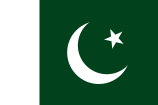Sunday, June 27, 2010
Somalia tops the 2010 Failed States Index followed by Zimbabwe, Sudan, and Chad.
The index issued by the prestigious Foreign Policy magazine and the Fund for Peace, a Washington-NGO, ranks India 87th in a list of 177 countries.
Burma has been placed at 13. Sri Lanka is ranked 22 and Nepal 25. China is at 57th place.
Norway is ranked the world’s most stable country and is at the bottom of the list.The Untied States is ranked 158 but is not among the 10 most stable countries.
The report notes that Pakistan has more than once been described as the world’s most dangerous country. Its wild northern reaches remain host to various branches of the Pakistani Taliban and Al Qaeda.
More than three million Pakistani civilians were displaced by “counterinsurgency” operations in 2009 — the largest single movement of people since the Rwandan genocide.
“President Asif Ali Zardari’s democratically elected government looks hapless — unable to gain any measure of civilian control over a nuclear-armed military … or an intelligence service that stands accused of abetting the Afghan Taliban,” observes the Foreign Policy magazine.
Social Indicators
Pakistan is the world’s seventh-most populous country, with a population density of over 226 people per kilometre. The country has a moderate youth bulge; the average age is 21 and over 37 per cent of Pakistanis are under 15 years of age.
Pakistan has historically been home to vicious political battles between rival parties, as well as consistent conflicts within the tribal regions and in Balochistan. Pakistan suffers from a significant brain drain.
The instability of the country has pressured many students to seek education abroad; many scientists, doctors, and businesspeople who can afford to leave the country altogether.
Economic Indicators
The poorest 10 per cent of Pakistanis account for four per cent of the national income, while the richest 10 per cent account for over 26 per cent of the income.
“Billionaire President Asif Ali Zardari is one of Pakistan’s wealthiest men.”
The official unemployment rate is 7.4 per cent but it could be higher.
The country had a trade deficit of nearly $15 billion in 2008 and has an inflation rate of 20.8 per cent. The inflation rate increased dramatically due to devaluation of the Pakistani rupee under Pervez Musharraf and the rising costs of production stemming from social and political instability.
Political/Military Indicators
While presidential elections in Pakistan are indirect, President Zardari’s election nevertheless represents a shift towards legitimate democratic governance.
The continuing violence in Pakistan’s poorest and most remote regions makes it extremely difficult for food and medical supplies to reach the areas that need it most. Many parts of the country go without electricity and clean water; conditions are notoriously poor in the refugee camps in northern Pakistan.
The human rights situation has improved significantly since 2008.
The security apparatus indicator has also improved. In Pakhtunkhwa and Balochistan local militias exercise significant control over their communities. In the tribal areas, the government’s authority is barely recognized.
The 2008 parliamentary elections brought tensions within the political elite to a peak. However, the conclusion of the elections and the restoration of civilian government have since eased tensions.
The indicator for external intervention has worsened since 2008. Pakistan is the second-largest recipient of US foreign aid. The US is also using drone aircraft to attack Taliban and Al Qaeda sites within Pakistan.













No comments:
Post a Comment